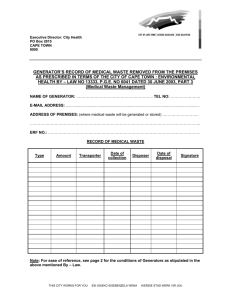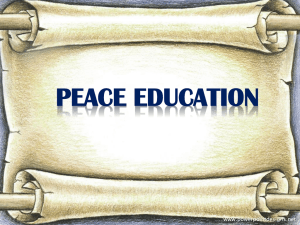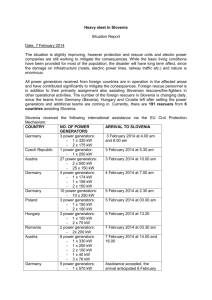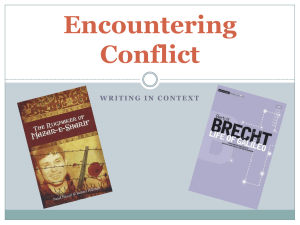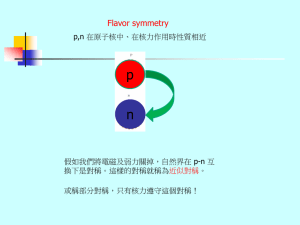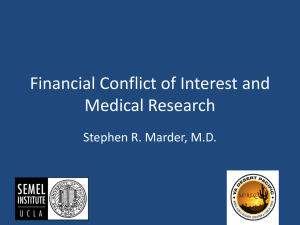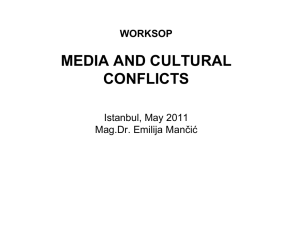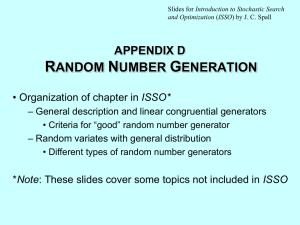See the presentation
advertisement
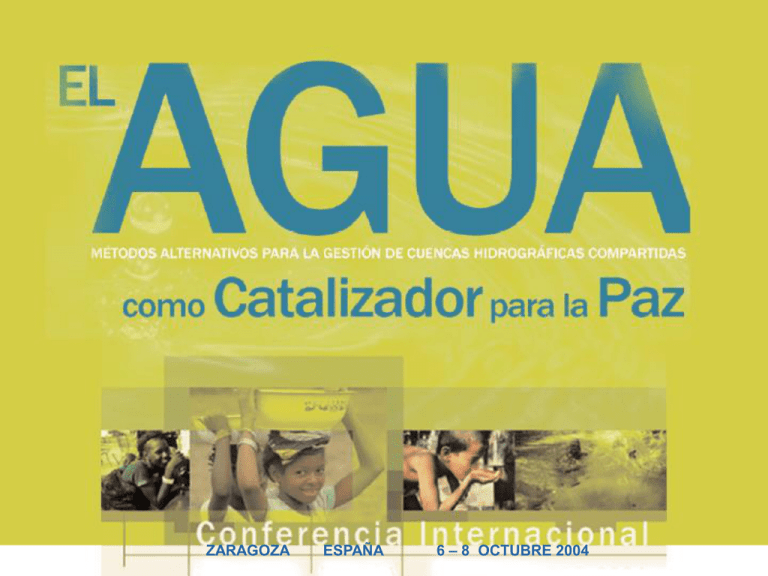
ZARAGOZA ESPAÑA 6 – 8 OCTUBRE 2004 WATER CONFLICT AND COOPERATION: The Transition to a Purposeful Future Evan Vlachos Sociology & Civil Engineering Colorado State University and Unesco PC-CP and WWAP A. PLANNING AND MANAGEMENT IN THE 21 ST CENTURY = Rapid Change and Complexification = Sharing Water: Reasonable and Equitable Distribution B. THE SEARCH FOR IMPROVED DECISION MAKING = Sources of Stresses and Strains = On Volatility and Vulnerability C. THE RANGE OF PUBLIC ENGAGEMENT = From Concerns, to Contestation, to Conflict = Strategies and Tactics for Conflict Management D. EMERGING PARADIGMS IN PARTICIPATORY P&M = Addressing Complexity and Uncertainty = Envisioning, Empowerment, Enactment Premises of Foresight 1. Trend is not destiny Premises of Foresight 1. Trend is not destiny 2. Those who live by the crystal ball are bound to eat groundglass Premises of Foresight 1. Trend is not destiny 2. Those who live by the crystal ball are bound to eat groundglass 3. It is better to be approximately right rather than precisely wrong The Variety of “Shocks” in Current Society • Cultural Shock = technophobes and technophiles • Future Shock = “raplexity” • Information Shock = data and knowledge • Geopolitical Shocks = fragmentation and globalization Population Experiencing Freshwater Scarcity, 1990 - 2050. The International River Basin In the international arena, particularly in conditions of water scarcity, the difficulties of water management and planning are compounded by several factors: • Relationships of power, position and interest • Territorial jurisdictional and ownership disputes • Political and ideological rivalries and geopolitical setting • Absence of effective institutional legal machinery for settling riparian disputes • Deeply rooted cultural and social attitudes toward water that make change difficult (hydroculture) Theoretical Model of the Sources of Conflict Over International River Basins Non-Cooperative Setting 1. Pre-existing general antagonism among riparian nations 2. Little previous progress in regional management of river issues Environmental Imbalance 1. Perceived growing scarcity of usable water 2. Perceived growing inequality in distribution of usable water Power Asymmetry 1. Skewed power ratio among riparian nations 2. Little restraining reciprocal interdependence among riparian nations Archetypal Worldviews Worldview Antecedents Conventional Worlds Smith Market Policy Reform Barbarization Breakdown Fortress World Great Transitions Eco-communalism New Sustainability Paradigm Muddling Through Keynes Bundtland Philosophy Market optimism; hidden & enlightened hand Policy stewardship Existential gloom; population/resource catastrophe Hobbes Social Chaos; nasty nature of man Morris & social Pastoral romance; human goodness; utopians evil of industrialism Ghandhi Sustainability as Mill progressive global social evolution Your brother-inNo grand philosophies law (probably Malthus Source: Great Transition [SEI, 2002] Motto Don’t worry, be happy Growth, environment, equity through better technology & management The end is coming Order through strong leaders Small is beautiful Human solidarity, new values, the art of living Que sera, sera The Grand Transformation • Globalization • Complexity • Interdependence • Uncertainty • Vulnerability • Turbulence Complexification • Generalized unrest • Free - floating anxiety CONCERNS • issues • general debate CONFRONTATIONS CONFLICTS • contestations • controversies • cleavages CRISES •extreme confrontations • stakeholders clearly delineated •parties-atinterest • open civil unrest •countermovements •protests, resistance •revolutionary upheaval • violence THE FIVE CRISES •An ENGINEERING Crisis: Supply & Demand •An ECOLOGICAL Crisis: Quality •An ORGANIZATIONAL Crisis: Institutional Mobilization & Coordination •A METHODOLOGICAL Crisis: Data & Modeling •A PERCEPTUAL Crisis: Public Awareness, Involvement & Participation The Competition for Water • Use vs. Use • Present vs. Future • Region vs. Region • Quantity vs. Quality • Water vs. Other Natural Resources • Water vs. Other Social Priorities “Flashpoints” • Rivers forming a shared boundary • Human action triggers disruption [e.g. dams] • In cases of power asymmetries [water hegemony] • Following extreme events [e.g. droughts, floods, etc.] Changing Approaches to Planning and Management 1960s Feasibility studies, Elitist planning, Extrapolative orientation 1970s Environmental Impact Assessment, Indicators/Principles & Standards, modeling/data 1980s Cumulative Impact Assessment, foresight emphasis, “User pays,” “Polluter pays” principle 1990s Sustainability, Equity/Efficiency/Effort, Normative Planning 2000s Globalization, Integrated/Holistic/Comprehensive, “Co-evolution” UNDERLYING TRANSFORMATIONS VOLATILITY TURBULENCE AND UNCERTAINTY VULNERABILITY INTERDEPENDENCIES AND RISK VIGILANCE ENVIRONMENTAL SCANNING AND PREPAREDNESS Vulnerability analysis • a necessary step in development of emergency management plans. It identifies all possible vulnerabilities, presents historical data about past disasters, assesses future probability and frequency of emergencies and disasters, analyzes impacts and effects, and validates data VULNERABILITY [a] [b] [c] [d] Fragile Physical Environment = environmental degradation = lack of ecosystem resilience = history of extreme hydrological events Fragile Economy = economic inequalities/disparities = inadequate funding Lack of Local Institutions = lack of social resilience = poor social protection = marginalization = capacity for recuperability Lack of Preparedness = inadequate warning systems = lack of training = lack of community mobilization KEY CHALLENGES • conflict prevention • conflict management, and • the settlement of formal disputes POLITICIANS [elected representatives policy generators] PRACTITIONERS [implementors administrators] POLITICIANS [elected representatives policy generators] PROFESSIONALS [knowledge generators researchers data & information] PRACTITIONERS [implementors administrators] POLITICIANS [elected representatives policy generators] PROFESSIONALS [knowledge generators researchers data & information] PRACTITIONERS [implementors administrators] PUBLIC [recipients] POLITICIANS [elected representatives policy generators] PROFESSIONALS [knowledge generators researchers data & information] PRACTITIONERS [implementors administrators] PUBLIC [recipients] EFFECTIVE GOVERNANCE • • PARTICIPATION TRANSPARENCY • COHERENCY • RESPONSIVENESS • NORMATIVE COMMITMENT • INTEGRATIVE THE ON-GOING CHALLENCE OF RELATING: Legal Mandates Professional Standards 0 0 Prudent 0 DM Balanced 0 Public Desires Community at Work 1966 THE RANGE OF PUBLIC ENGAGEMENT INTERNALIZED APPROACH CLOSED SYSTEM AWARENESS PERSUASION MONOLOGUE EDUCATION INVOLVEMENT INFORMATION FEEDBACK DIALOGUE PARTICIPATION CONSULTATION JOINT PLANNING PARTICIPATORY PLANNING DEMOCRATIC DELEGATION OF POWER, SHARED LEADERSHIP PERCEPTIONS OF PARTICIPATION a. PARTICIPATION AS POLICY b. PARTICIPATION AS STRATECY c. PARTICIPATION AS COMMUNICATION c. PARTICIPATION AS CONFLICT RESOLUTION d. PARTICIPATION AS THERAPY PREMISES a. The process should provide opportunities for members of the public who wish to participate to do so. b. The public should be made aware of the availability of such participation opportunities so that they can make that choice. c. Adequate information should be made available to the public so that they can participate effectively. OVERALL GOALS a. Give people who feel they will be affected by a project the chance to participate in decisions. b. Reach an acceptable effective agreement on a course of action. c. Conduct public hearings that harbor no surprises or reversals of all preparatory steps. c. Launch projects that stand an excellent chance of being realized because they are widely understood and supported by the public. REPRESENTATIVENESS & PUBLIC INTEREST a. Public participation is a learning process by which each participant acquires a more complete understanding of both the central issues and how other parties in the debate perceive the issues. b. Members of the public can provide useful information to the decision maker, especially when values and preferences are involved that cannot be easily quantified. c. Accountability of political and administrative decision makers is likely to be reinforced if the process is open to public view. d. Consensus can be built through a systematic process of conflict management. e. Public confidence and trust increase (and legitimacy also expands) when citizens can see all the issues have been fully and carefully considered. f. Better decisions can be made by providing traceability and visibility of the decision making process. g. The process can help use the experience and know how of the public to develop creative solutions to problems and to reduce later delays and costs from not having involved the public. CAUSES OF LOCAL OPPOSITION • FEAR • EQUITY • DISPARITY BETWEEN COSTS & BENEFITS • DISTRUST / LACK OF CONFIDENCE • COMMUNITY IMAGE • PROPERTY VALUES • NUISSANCE NIMBY NIMTO LULU BANANA DISPUTE RESOLUTION PRIMARY PROCESSES • Adjudication • Negotiation ALTERNATIVE DISPUTE RESOLUTION Premises: • Seen as problem solution • Co-operative rather than adversarial • Involvement of a neutral third party • Involvement of representatives capable and authorized to resolve the dispute CRITERIA & STANDARDS • ECONOMIC EFFICIENCY • EQUITY • ENVIRONMENTAL/ECOLOGICAL SUSTAINABILITY Key Characteristics WFD • Prevent further deterioration, achieve “good status“ for all waters • Promote sustainable water use • River basin approach • “Combined“ approach of emission limit values and quality standards • Get prices right • Get citizens involved THE ESSENCE OF WFD/2000 • PLANNING AND INTEGRATED MANAGEMENT • PRICING AND TRUE COST RECOVERY • PARTICIPATION AND IMPROVED DECISION MAKING ACTIVE INVOLVEMENT Some Broad Incentives and Institutional Mechanisms for Resolving Water Conflicts • Commonly perceived economic interest • Shared ecosystemic conditions • Political will and commitment • Need, will to obtain/share data • Historical and traditional customs and values • Exogenous incentives (third party help) Identifying Stakeholders J. Creighton, 1981 The dynamics of cooperation - iterative and reinforcing Sadoff 2003 Types of Cooperation and Benefits on International Rivers 1. THE ECOLOGICAL RIVER Increasing benefits “to the river” 2. THE ECONOMIC RIVER Increasing benefits “from the river” 3. THE POLITICAL RIVER Costs arising “because of the river” 4. THE CATALYTIC RIVER Increasing benefits “beyond the river” _____________ Source: Sadoff and Grey (2002) Requisites for the Transition • The Need for New Paradigms – Sustainability, heterarchy, co-evolution • The Understanding of New Contexts – “Raplexity,” interdependence, globalization • The Emergence of New Methodologies – Cumulative, synergistic, diachronic impacts – Indicators, DSS, data-information, judgement – Computational prowess GNOSIS [Intelligence] [Knowledge] I3 DOXA [Interpretation] [Judgement] PRAXIS [Implementation] [Action] Supplementary Mechanisms for Transboundary Waters • Second track diplomacy (Hydrodiplomacy) • Alternative Dispute Resolution (ADR) • Epistemic communities (Water ombudsmen?) • Public awareness and participation (Supportive “spirit”) Towards a Strategy of “Vigilance” • Flexible responses, i.e., operational and strategic flexibility • Proactive commitment, in terms of environmental scanning and through an emphasis on risk rather than crisis management • River basin focus and robust transnational “regimes” • Combinations of global approaches and national plans • Ecosystemic emphasis and environmental interdependencies • Integrated, comprehensive management, capacity building and organizational mobilization. Emerging Operational Principles • Envisioning Share the dream, share the goals • Empowerment Joint decision making, power sharing • Enactment Implementation, civic engagement THE TRICKS OF MEMORY PAST PRESENT FUTURE Nostalgia vs History Ideology vs Modeling Utopian Vision vs Reasonable Approximation Reconsidering the Past Rediscovering the Present Reinventing the Future WHY IS IT SO DIFFICULT TO “MAKE IT HAPPEN?” THE FORCES OF HISTORY & EXPERIENCE FUNDAMENTAL CONFLICTS 1. THE INERTIA OF HABIT A. COGNITIVE CONFLICTS 2. THE INERTIA OF HISTORY B. STAKEHOLDER CONFLICTS 3. THE INERITA OF EQUILIBRIUM C. IDEOLOGICAL CONFLICTS The 3 R’s Rethinking new paradigms Reorganizing organizational mobilization Retooling new skills and resources The Ultimate Paradigm Either a Democracy of Restraints or a Tyranny of Constraints ZARAGOZA ESPAÑA 6 – 8 OCTUBRE 2004
